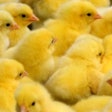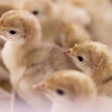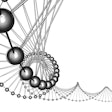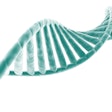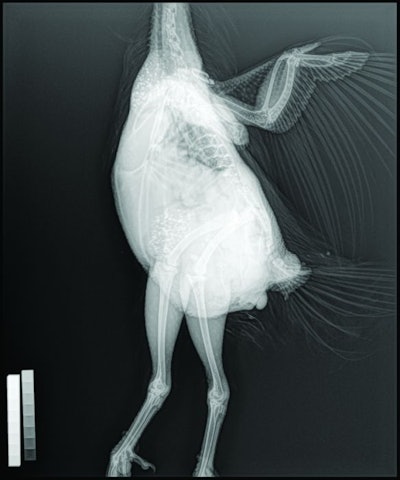
A digital X-ray procedure that takes around 45 seconds to conduct, is practical for hens and poultry workers and delivers reliable, reproducible results has been developed by scientists at the U.K.’s Roslin Institute. The procedure could help in the selection of optimum birds for breeding, improving animal health and welfare.
Bone quality revealed
This new approach enables breeders to consider bone density in their selection of laying hens, which are susceptible to bone fractures due to biological changes linked to egg production.
This new method involves quickly capturing digital X-rays of live hens from which their leg bone density can be calculated and the data digitally shared. Clear images are produced with minimal exposure time, and the procedure, which takes about 45 seconds, offers a fast and practical alternative to conventional imaging techniques, such as Dural-energy X-ray Absroptiometry, Digitized Flouroscopy and CT Scans.
Strong bones offer improved health and reduced risk of fractures in birds that have freedom to move around in their environment, increasingly common as ever-more countries reject traditional cages.
The keel bone of hens is particularly prone to damage, and previous research by Roslin has found that leg bone density is genetically related to that of the keel bone and to fracture risk.
The Roslin team notes that, for decades, poultry breeders have chosen which birds to breed according to a mix of various factors, but it has not been possible to account for bone quality in live hens. And a practical method of measuring bone quality in hens has been unavailable.
Bone fractures have long been recognized as a welfare issue in laying hens since the physiological adaptations for egg laying increase the likelihood of bone loss during the life of the hen.
Breeding for changed environments
Drives to extend the laying period of hens might place additional demands on the skeleton, although recent studies have suggested that the number of eggs a hen lays may not be as important as the issues around the timing of lay onset.
Switching to more extensive layer management systems, which allow birds greater opportunities for movement and, as a consequence, increased functional loading of the skeleton, should provide more opportunities for improving bone quality. However, alternative systems also result in increased opportunities for collision and falls and are associated with a greater incidence of bone damage often featuring the keel.
This practical way of measuring bone density could also help to reduce the number of birds needed for research into nutritional and management aids for bone health.






.jpg?auto=format%2Ccompress&fit=crop&h=167&q=70&w=250)


